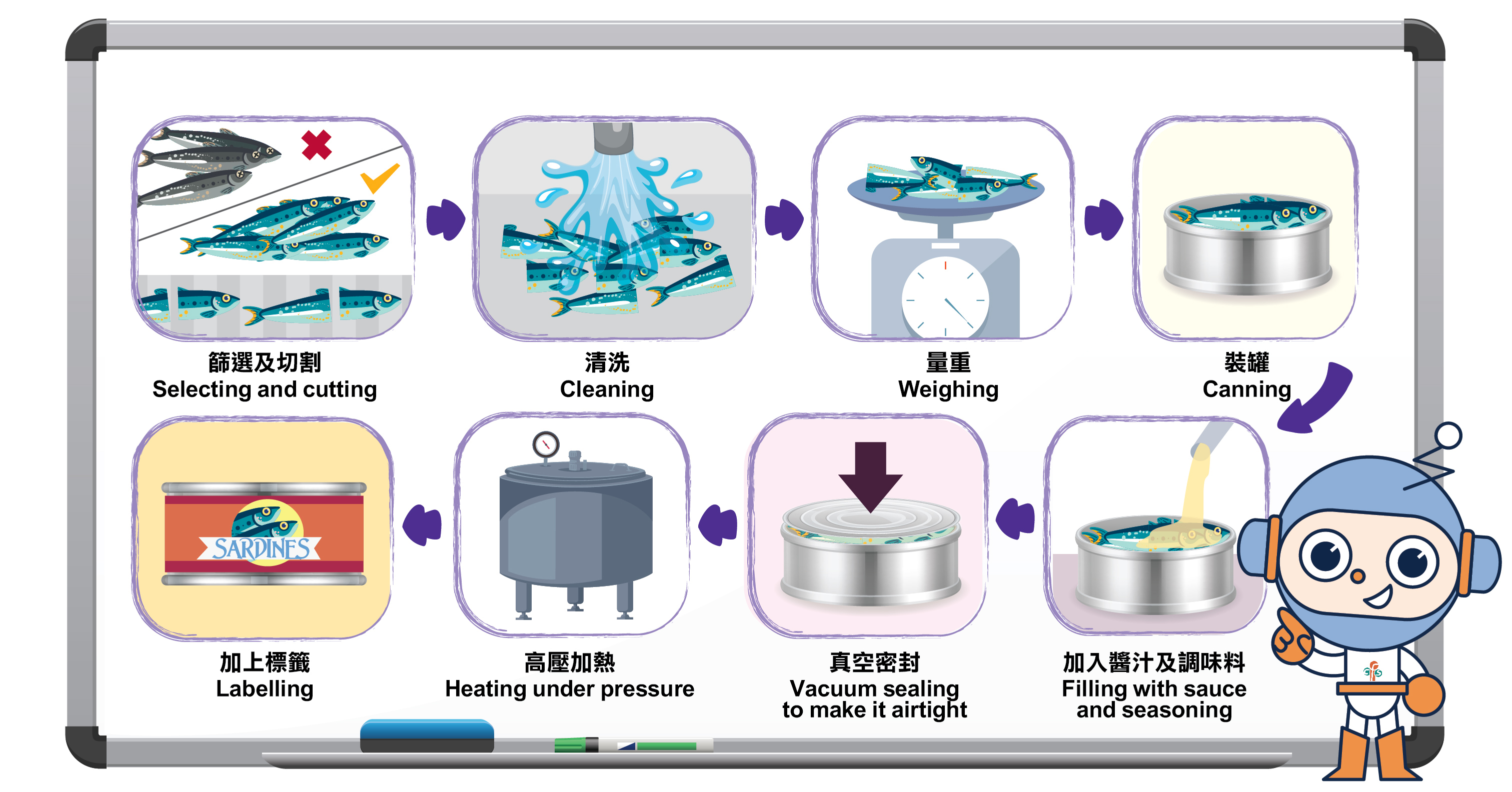
Food Safety Focus (186th Issue, January 2022) – Article 2
Know More about Canned Foods
Reported by Mr. Kenneth YIP, Scientific Officer,
Risk Communication Section, Centre for Food Safety
Food preservation comprises a number of techniques for keeping food from spoiling after harvest or slaughter. Canning is one of the most popular methods of food preservation, which allows us to make foods readily available and easily transportable all year round.
It All Began with a Can
The principle of canning was first developed in the late 18th century. A French inventor Nicolas Appert invented a food preservation process involving the basics of canning – by packing meat and poultry in glass bottles, and corking and submerging the bottles in boiling water. With the advent of cheap milled metals, tinplate and aluminium are now more commonly used for making food cans.
One of the advantages of canning is the long shelf life, typically ranging from one to five years. Commercial canning includes heating foods to a high temperature, e.g. 121°C, under pressure. Disease-causing bacteria and Clostridium botulinum spores are killed in the process. Heating is applied for a period of time long enough to accomplish an over 99.9999% reduction in the number of spores of the harmful pathogen. This usually entails heating the canned product for at least two to three minutes, rendering it ‘commercially sterile’, which means that the contents are safe and shelf-stable at normal storage temperatures. Therefore, canned foods can be stacked up conveniently with no refrigeration required.

Figure 3. Workflow of canning
Is it Safe to Eat Food from a Dented or Bulging Can?
When a consumer sees a dented or bulging can of food, a common question arises: is it safe to eat? In general, the food should be safe to consume even if the can is slightly dented, as long as the denting is shallow and there are no obvious signs of damage. If the denting is severe, the can may have a hidden split, hole or break in the seal, in which case the food within should not be consumed. If the can has rust on it, the food inside should not be eaten as well.
Consumers should also avoid eating food from a visibly bulging can. If the can spurts when it is opened, this may be a result of gas building up in the food due to the presence and growth of spoilage microbes introduced through pinholes or poor seams. These microorganisms have the potential to make the food deteriorate and unfit for consumption. Therefore, food from a can that is visibly bulging should not be consumed.
Beware of the Salt and Sugar Contents in Canned Foods
In canned foods, the nutrient retention varies depending upon the process, the product and the nutrient, among other conditions, and in some cases may offer comparable nutrition to fresh produce and their frozen counterparts. While some may concern whether preservatives are added to canned foods, preservatives are rarely added as the heat treatment of the canning process preserves the food.
It is worth noting that some canned foods might contain higher levels of salt (sodium) or sugar in the sauce and condiment for improving flavour. Frying can also make canned foods such as fried dace fish with salted black beans high in fat. While too much sugar, sodium and fat in diet is linked to non-communicable diseases, consumers can read the nutrition labels on canned foods to avoid excessive consumption. Wherever possible, rinse foods to lower their salt and sugar contents.
In conclusion, canned foods can be considered as a convenient alternative to fresh foods when they are unavailable. While pathogens are removed during the manufacturing process, look for signs of damaged cans and check the expiry date when purchasing canned foods. When opening a can, follow the manufacturer's recommendations for where to store it and for how long. Reading nutrition labels can help you make better food choices and avoid consuming too much salt and sugar.


